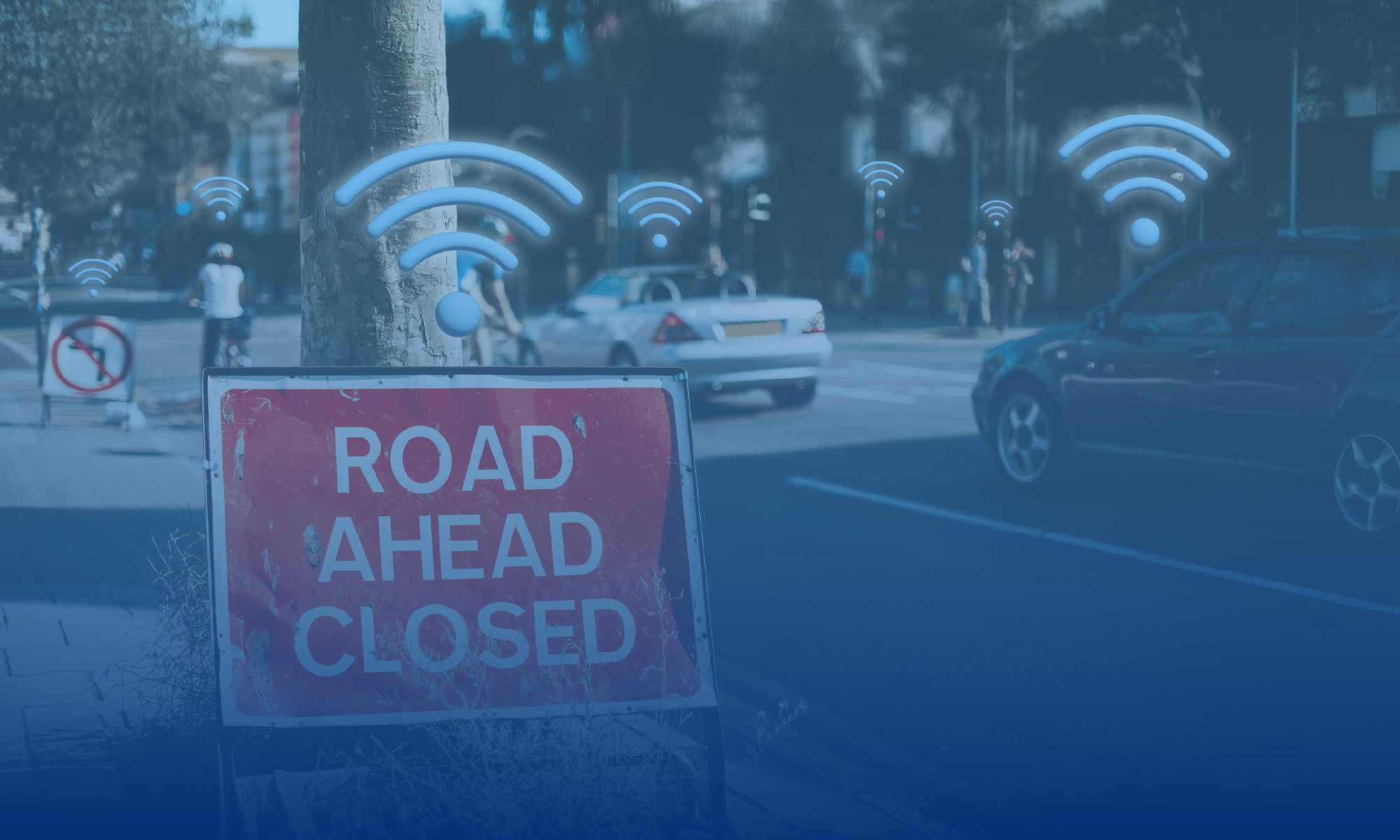
In today’s fast-paced world, real-time data is more than just a convenience—it’s a lifesaver.
At INRIX, we harness billions of data points from connected vehicles, road sensors, and mobile devices to make driving safer and smarter. One of the most impactful ways we do this is through driver safety alerts powered by INRIX data and INRIX Help Alerts.
The Power of Real-Time Hazard Detection
Every second, INRIX analyzes traffic flow patterns to detect anomalies—such as sudden slowdowns, or road closures—and transforms these insights into actionable alerts that help drivers avoid danger before encountering it. These INRIX Smart Alerts improve roadway safety through real-time warnings delivered directly to drivers.
Smart Alerts in Action
- Dangerous Slowdown Ahead: Through Drivewyze Smart Roadways, truck drivers receive warnings of abrupt traffic changes 2-3 miles ahead. In one study, 22% of drivers reduced their speed by at least 5 mph within 30 seconds of receiving the alert—helping prevent rear-end collisions.
- Incident Reported Ahead: When INRIX detects an incident through vehicle telemetry and traffic flow data, it sends alerts to approaching drivers, allowing them to slow down or reroute.
- Road Closure Ahead: Alerts guide drivers around closures caused by construction or emergency response, helping them find alternate routes quickly.
These alerts are particularly critical for freight traffic, as trucks require 66% more stopping distance than cars. Traditional warning systems often fall short, making innovative solutions like INRIX-powered alerts essential.
HELP Alerts: Managing Large-Scale Roadway Incidents
Knowing about a major highway incident is one thing, but effectively managing it is another challenge entirely requiring specific workflows and tools. To bridge this gap, HELP Alerts leverages the INRIX real-time traffic data to detect and manage large-scale roadway incidents. The platform, built on iLog’s incident response system, enables transportation officials to communicate directly with drivers in affected areas without the need for a pre-installed app.
Here’s how it works:
- Wireless Emergency Alerts (WEA): The system uses the same technology as AMBER alerts to send notifications to all mobile devices within a targeted geographic area. This ensures broad and immediate reach.
- Two-Way Communication: The initial alert includes a link to a dynamic website, allowing motorists to opt-in for ongoing updates via text message and to provide information back to the authorities. This bidirectional communication helps agencies understand the situation on the ground, including the number of vehicles and people affected.
- Geo-Targeting: Transportation agencies can define specific geographic zones for alerts. “Approach Alerts” warn drivers nearing a hazardous area, while “Zone Alerts” notify those already within an incident zone.
Together, these capabilities make HELP Alerts a powerful tool for keeping drivers informed, improving emergency response, and enhancing roadway safety during major incidents.
Why It Matters
By combining these diverse data streams, INRIX is reshaping the future of transportation safety. Every alert delivered is another opportunity to prevent accidents, save lives, and make the roads safer for everyone. INRIX uses a rich and diverse set of data sources to generate safety alerts for drivers. These alerts are designed to proactively warn drivers about hazards like sudden slowdowns and road closures. Here’s a breakdown of the key data types INRIX leverages:
- Connected Vehicle Data: INRIX gathers real-time telemetry from millions of vehicles, including speed, location, acceleration, braking, and route trajectories. This data enables the detection of anomalies, such as sudden deceleration, which can signal congestion ahead.
- Road Sensor and Infrastructure Data: Data from Departments of Transportation (DOTs) traffic cameras, and embedded road sensors provide insights into traffic flow and density, lane closures and construction zones, as well as signal timing and intersection activity.
- Mobile and App-Based Data: Anonymous data collected from navigation apps and mobile devices plays a key role in providing real-time traffic conditions, revealing driver behavior trends, and supporting route prediction for Smart Alerts.
- Incident Reports and Journalistic Sources: INRIX relies on curated incident data from emergency services and news outlets to identify debris and other hazards that may not be immediately apparent through traffic flow data.
Driving the Future of Roadway Safety
Every alert delivered is another opportunity to prevent accidents, save lives, and make the roads safer for everyone. In a world where every second counts, INRIX data ensures drivers aren’t just reacting to hazards—they’re prepared for them. To learn more, watch the Traffic Slowdown Alerts webinar.




